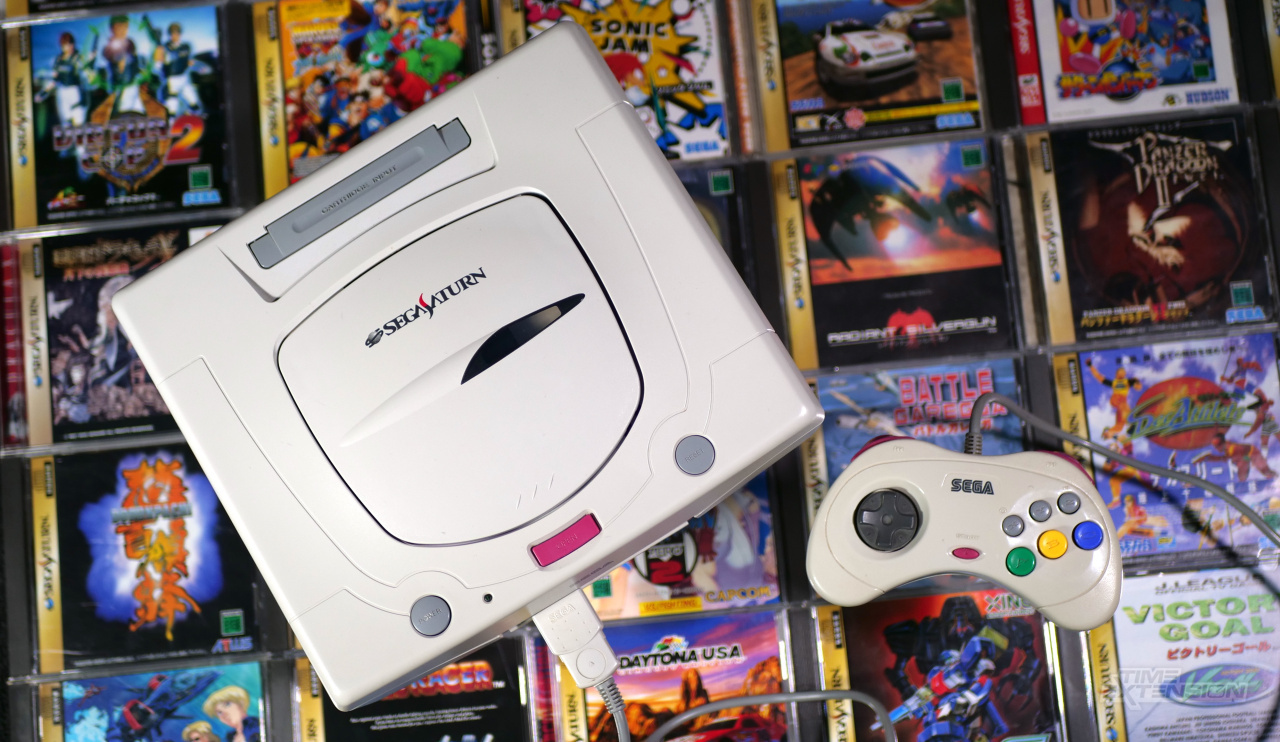


30 years ago, Sega was one of the most popular video game companies. While the Master system was never as big as the NES, Genesis had been a formidable contender for the SNES. Sega had been able to create a rival mascot to Nintendo’s Mario in Sonic. Sonic even launched a multimedia franchise including cartoons and comics. The release of the Sega Saturn had the potential to put Sega ahead of the pack in cutting edge technology and iconic games, but a variety of issues led to the fall of Sega’s hardware production by the turn of the millennium.
As the transition from 16 to 32 bits occurred, Segs began to lose ground. Sony initially was in talks to develop a CD add on for Super Nintendo to compete with Sega CD. As negotiations between Sony and Nintendo fell through, Nintendo licensed their characters to Phillips for the CDi system, resulting in infamous Mario and Zelda games. Sony went their own way and started the enduring PlayStation system, beginning the disc-based 32-bit console wars. PlayStation was able to quickly dominate the market after launching in Japan in 1994 and America in 1995. Meanwhile, Sega released numerous add-ons to enhance the Genesis, including the Sega CD and 32X, which were quickly abandoned to focus on the Saturn. Nintendo waited until 1996 to release the Nintendo 64 to finesse Mario 64, but Sega jumped into the next generation in 1995 with a sudden announcement of a same day release for $400 at May 1995 E3. This sudden rollout left many stores unprepared for the Saturn’s release, which was expected by many stores to happen in the fall, and a boycott of Sega products by KB Toys. The Saturn failed to sell as many systems as the PlayStation and Nintendo 64.
Despite this rocky start, the Saturn plays an important role in gaming history. It was a pivotal system for the transition from 2D to 3D. Some of the first 3D platformers, like Bug and Bug Too, were Saturn games that experimented with including a third dimension of depth, albeit in a more limited form than Mario 64. Bubsy 3D, infamous for its unfinished polygonal graphics and awkward tank controls, was almost released on Saturn. After Bubsy 3D failed to make a splash on PlayStation in holiday 1996 against the far more advanced Mario 64, development of the Saturn version was discontinued. As the Nintendo 64 made the limitations of 32 bit systems became apparent, Sega of America stated “the Saturn is not our future” and shifted focus to developing the Dreamcast.

Sega had failed to release a major 3D Sonic game for Saturn. Sonic creator Yuji Naka was busy with Nights into Dreams, an experimental 3D game for the Saturn. Efforts to develop prototypes for a 3D platformer codenamed Sonic X-treme fell apart. This left Sonic with only the wonky Sonic R racing game, the isometric game Sonic 3D Blast also available on Genesis, and Sonic Jam, a hub world with re-released Genesis Sonic games. For the Dreamcast, Sega would make sure to include major new Sonic games in the revamped Adventure series and the Shuffle party game, but the damage of the Saturn had been done. The Dreamcast would prove to be Sega’s last console before shifting to third party development.
American Saturn releases ended by November 1998, with the release of Magical Knight Rayearth. This Role Playing Game, connected to the popular fantasy manga by CLAMP, was one of a handful of Saturn RPGs which have become legendary for their quality as well as their price. Even more rare is Panzer Dragoon Saga, a four disc RPG that connected to the earlier rail shooter Panzer Dragoon and Panzer Dragoon Zwei. Panzer Dragoon Saga is among the rarest video games, often selling for $1500 or more. A few other well regarded Saturn RPGs to release in America include Albert Odyssey, Mystaria: the Realms of Lore, Shining Wisdom. the Legend of Oasis, Shining the Holy Ark, Dragon Force, and Shining Force III. However, Shining Force III’s localization shows the problems faced by American Saturn owners. Only the first of three Japanese scenarios received an American release. Hundreds of Japanese exclusive Saturn games exist. Sega of Japan used a commercial character Segata Sanshiro to market the console.

One of the experiments for which early disc based games are known for is the FMV game. Solar Eclipse was a space shooter game with gameplay similar to Star Fox. Solar Eclipse included live action cutscenes, as well as on screen interaction from actors during levels. While not a full FMV game like other CD systems’ Plumbers Don’t Wear Ties or Night Trap, it does use actors from 90s science fiction show Babylon 5. The Saturn’s attempts to hybridize FMV and CGI did not always work as well as Solar Eclipse. Among the most infamous video games of the 1990s is Virtual Hydlide, an early effort at creating a 3D action RPG. The use of FMV cutscenes and even an awkwardly moving FMV avatar led to one of the clunkiest of all games, with a frame rate that often drops into single digits. The randomized stages had the potential for roguelike depth of PS1 games like Chocobo’s Dungeon and Torneko series, but were far too empty to justify the 300 or more memory blocks the game consumes.
The Saturn has some of the best games of the 1990s, but also some of the worst failed experiments. Even the saving system, of directly saving to a watch battery only for it to expire quickly, led to frustrations by Saturn owners. Sega corrected this by introducing a large memory card that can be plugged into a slot on top of the system.
Did you enjoy the Saturn‘s varied game library, or do you prefer the PlayStation or N64?
Discuss this article on the ToonZone Forums.
The post Sega Saturn (North American Release): A 30th Anniversary Retrospective (The Beginning of the End for Sega) appeared first on Anime Superhero News.